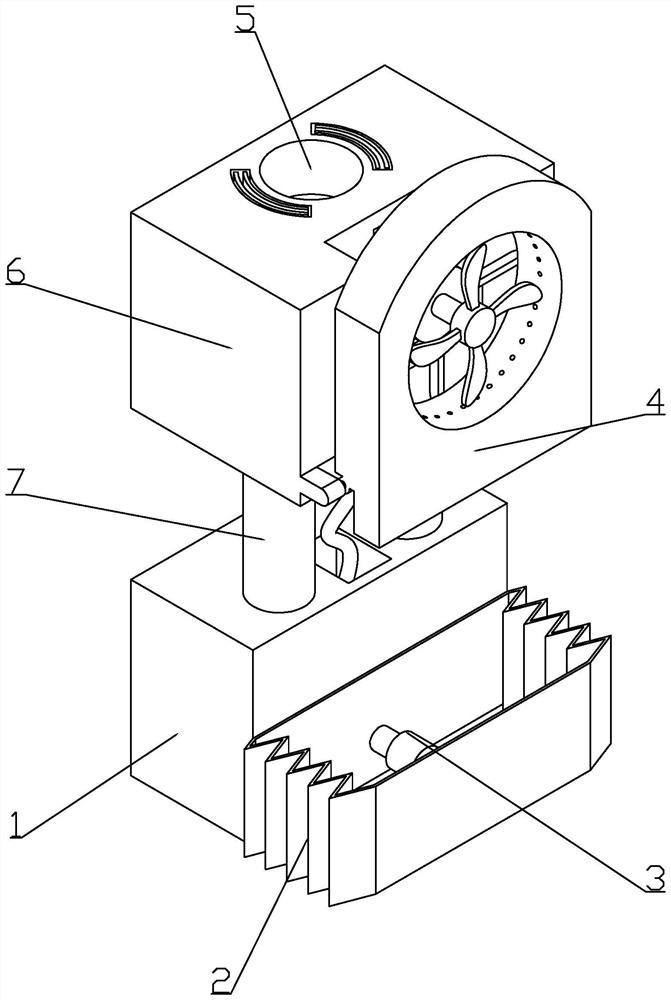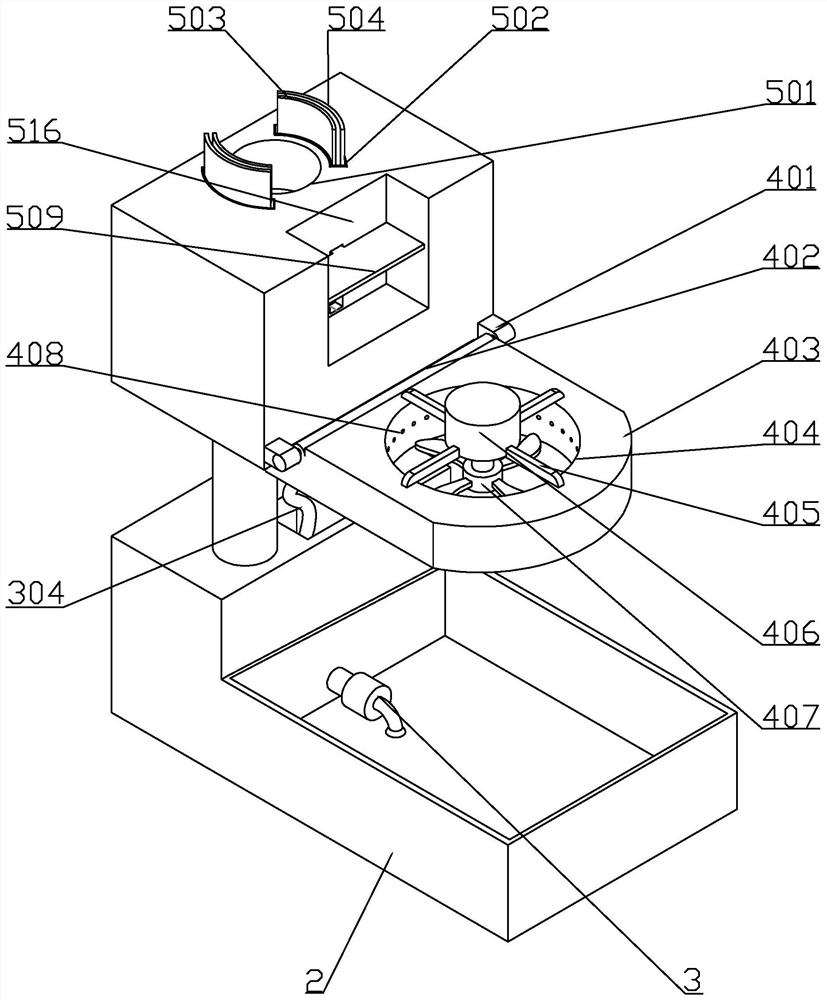Wound cooling device and scald treatment machine
A technology for a cooling device and a wound is applied in the directions of a heating device for treatment, a cooling device for treatment, a contraceptive device, etc. Effect
- Summary
- Abstract
- Description
- Claims
- Application Information
AI Technical Summary
Problems solved by technology
Method used
Image
Examples
Embodiment Construction
[0041] The following are specific embodiments of the present invention and in conjunction with the accompanying drawings, the technical solutions of the present invention are further described, but the present invention is not limited to these embodiments.
[0042] Such as figure 1 As shown, a burn treatment machine includes a placement base 1, a foldable box 2 is provided on the right end of the placement base 1, and two telescopic rods 7 are arranged in the placement base 1, and the two telescopic rods 7 are arranged in the placement base 1. In the sliding groove, the tops of the two telescopic rods 7 are provided with an installation housing 6;
[0043] Circulating water pumping device 3, the circulating water pumping device 3 is arranged inside the base 1 where the collapsible box 2 is placed, and can continuously transport the water in the collapsible box 2 upward;
[0044] Wound cooling device 4, the wound cooling device 4 is arranged on the right end of the installatio...
PUM
 Login to View More
Login to View More Abstract
Description
Claims
Application Information
 Login to View More
Login to View More - R&D
- Intellectual Property
- Life Sciences
- Materials
- Tech Scout
- Unparalleled Data Quality
- Higher Quality Content
- 60% Fewer Hallucinations
Browse by: Latest US Patents, China's latest patents, Technical Efficacy Thesaurus, Application Domain, Technology Topic, Popular Technical Reports.
© 2025 PatSnap. All rights reserved.Legal|Privacy policy|Modern Slavery Act Transparency Statement|Sitemap|About US| Contact US: help@patsnap.com



